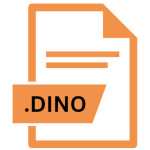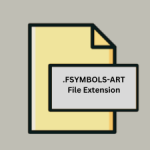.BTI File Extension

Nintendo Texture File
| Developer | Nintendo |
| Popularity | |
| Category | Raster Image Files |
| Format | .BTI |
| Cross Platform | Update Soon |
What is an BTI file?
.BTI file extension is associated with Nintendo’s GameCube console, specifically used for storing texture files.
These textures are essential components of the graphical representation in games, providing surface details to 3D models.
Understanding the .BTI file format is crucial for game developers, modders, and enthusiasts interested in the graphical aspects of GameCube games.
More Information.
When Nintendo launched the GameCube, it needed a robust system to handle game graphics. The .BTI format was designed to address this need by providing a standardized way to store texture data.
This file format allowed developers to include high-quality textures in their games while maintaining the performance of the console.
Initially, .BTI files were used exclusively in GameCube games, but their utility extended to subsequent Nintendo consoles like the Wii, which maintained compatibility with GameCube software.
Origin Of This File.
The .BTI file format was developed by Nintendo for use in the GameCube console, which was released in 2001.
The primary purpose of this file format was to manage textures efficiently, ensuring that games ran smoothly and graphics were rendered effectively on the hardware available at that time. The acronym BTI stands for Binary Texture Image, reflecting its role and structure.
File Structure Technical Specification.
.BTI file is structured to store texture data in a binary format. The key components of a .BTI file include:
- Header: This contains metadata about the texture, such as width, height, format, and mipmap levels.
- Image Data: The bulk of the file, containing the pixel data for the texture.
- Palette Data: If the texture uses a palette, this section stores the color palette information.
Technical Specifications
- File Header: The header provides essential information, including the dimensions of the texture, the texture format (such as RGB5A3, RGBA8, or CMPR), and the number of mipmap levels.
- Texture Data: Depending on the format, the texture data can be compressed or uncompressed. Formats like CMPR (Compressed Mipmapped RGB) are used to reduce the file size without significantly compromising the texture quality.
- Palette Data: For textures that use indexed color modes, the palette data stores the color information. This is typically used to reduce the file size and memory footprint.
How to Convert the File?
Converting .BTI files to other formats involve extracting the texture data and saving it in a more commonly used format like PNG or JPEG. Tools and software available for this purpose include:
- BTI2PNG: A command-line tool that converts .BTI files to PNG format.
- GIMP with Plugins: GIMP, a free image editor, can be used with specific plugins to open and convert .BTI files.
- Custom Scripts: For advanced users, custom Python or C++ scripts can be written to parse .BTI files and convert them to other formats.
Advantages And Disadvantages.
Advantages
- Efficiency: The .BTI format is optimized for the GameCube’s hardware, allowing for efficient texture loading and rendering.
- Compression: Supports various compression formats, reducing the file size and conserving storage space.
- Compatibility: Widely supported by GameCube and Wii games, making it a versatile format for Nintendo game development.
Disadvantages
- Proprietary: Being a Nintendo-specific format, .BTI files are not widely supported outside the Nintendo ecosystem.
- Complexity: The binary format and compression techniques can make manual editing and manipulation challenging.
- Limited Use: Primarily used in GameCube and some Wii games, limiting its applicability in modern game development.
How to Open BTI?
Open In Windows
- GIMP: With the appropriate plugins, GIMP can open and edit .BTI files.
- Texture Editors: Specialized texture editors like BrawlBox or SZS Modifier can open .BTI files and allow for viewing and editing.
- Command-Line Tools: Tools like BTI2PNG can be used to convert .BTI files to more accessible formats.
Open In Linux
- GIMP: The open-source nature of GIMP makes it available on Linux, along with the necessary plugins for .BTI support.
- Command-Line Tools: Linux users can compile and use command-line tools like BTI2PNG for file conversion.
Open In MAC
- GIMP: Similar to Windows, GIMP with plugins can be used to open .BTI files.
- Wine: Windows applications like BrawlBox can be run using Wine, allowing Mac users to access .BTI files.













